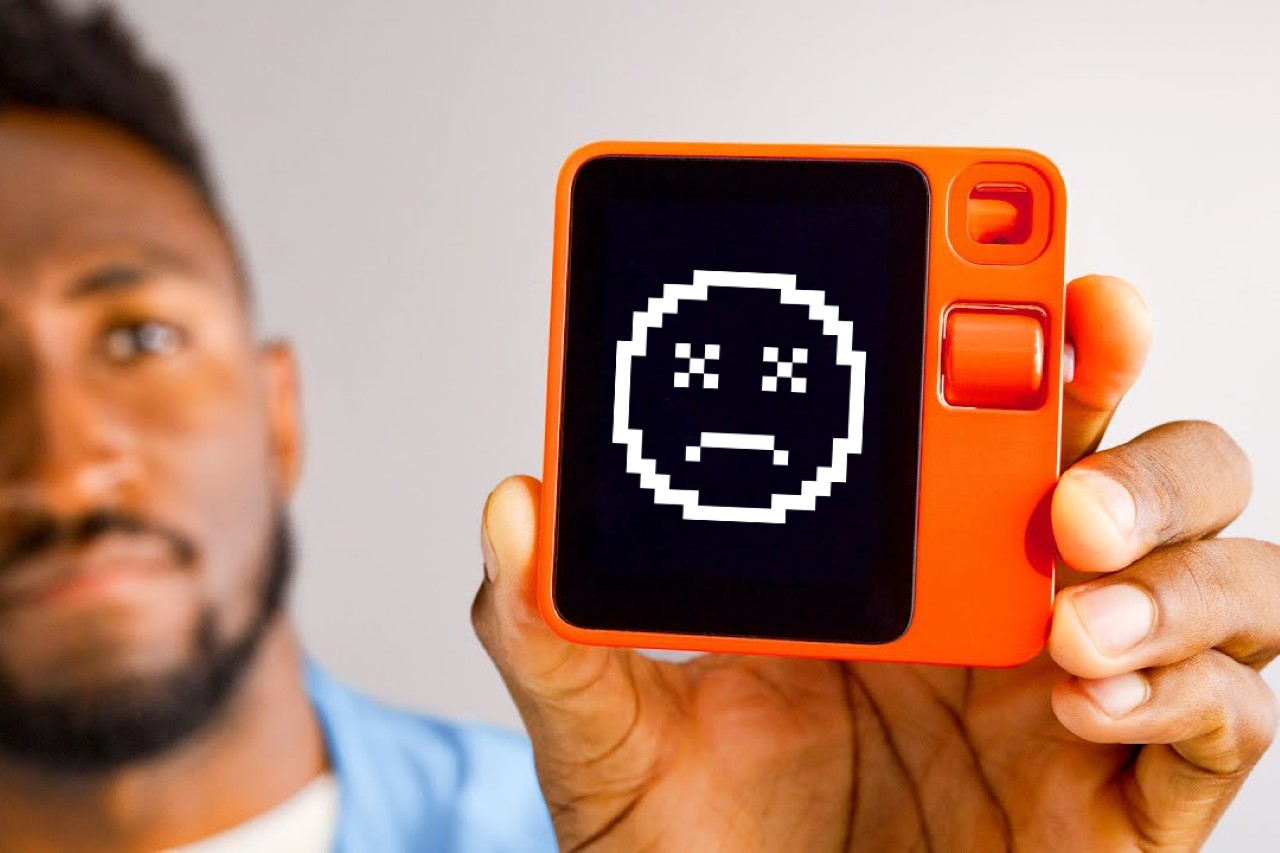Humane AI Pin and Rabbit R1 versus Tech Reviewers: Who’s to blame?
![]()
There’s a massive missing link between tech companies and tech reviewers… and instead of fixing it, we’re playing the blame game.
The backlash following bad reviews from MKBHD and other tech outlets like The Verge, Engadget, and CNET has been swift from the AI community. The internet is ablaze, either blaming Marques Brownlee for being too harshly critical in his review of the Humane AI Pin and the Rabbit R1 device… or shaming Humane and Rabbit for not delivering on what they promised. The blame, however, lies on the inherent relationship between the two parties. Like two people who aren’t emotionally ready to date, these AI companies shouldn’t have even shipped their products to tech reviewers.
The job of a tech reviewer, as its name rather simply suggests, is to provide an objective (or sometimes even a subjective) analysis of a product for their consumers/viewers. Tech Reviewers highlight technology through the lens of ‘Is this worth the money or not’… The problem, however, is that Humane and Rabbit needed beta testers, not tech reviewers.
![]()
Who’s to blame?
Let’s look at every single stakeholder in this AI charade and you’ll see that there’s some blame to go around for everyone. The first reaction, and justifiably so, is to blame Humane and Rabbit. They overpromised, underdelivered, hyped the product, raked in tonnes of VC and preorder money, but couldn’t stick the landing. Companies all across the world have been rushing to develop the ‘next iPhone’, and while Samsung has hedged all its bets on folding devices, and Apple on a $3400 headset, Humane and Rabbit happened to be at the right place at the right time with the right buzzwords. Imagine this, an AI assistant powerful enough to do anything you ask – it’s literally something out of a sci-fi movie, and that’s precisely what these companies hoped we’d think. They weren’t wrong. However, they committed the cardinal sin of the entrepreneur – they pitched something that didn’t exist. Sure, this wasn’t as detrimental as the stunts Elizabeth Holmes or Sam Bankman-Fried pulled, but in essence, it was still a far-fetched lie or rather a very convenient truth. An AI that does everything you ask doesn’t exist and probably won’t for a while… but a cute design or a body-mounted projector was more than enough to deceive us… and for the sake of this argument, let’s operate under the good-faith assumption that Humane and Rabbit didn’t know they were pushing a bad product.
Why the hardware trickery though? Why did Humane and Rabbit NEED to build hardware devices that looked fancy/quirky/cool? Here’s where the blame shifts to the powers that be – Google, Apple, Microsoft, Amazon, and Meta. For every reviewer that said the Humane AI Pin or Rabbit R1 “could’ve been a smartphone app”, there are thousands of engineers at these companies building JUST THAT. It’s no coincidence that Humane and Rabbit BOTH had their products publicly reviewed well before Google I/O and Apple’s WWDC. Rumor has it that Apple and Google are just waiting to launch AI assistants with similar features, tying into all the smartphone-related services. These large companies have repositories of consumer data, and they have a powerful influence, putting them miles ahead of the starting line when it comes to the AI race. The only way Humane and Rabbit could escape the clutches of these companies was to isolate themselves completely from them. Not to mention, there’s absolutely no way Apple would allow a third-party smartphone app to have Humane or Rabbit’s level of control over your entire device. Sure, Humane and Rabbit could have made all-powerful AI assistant apps, but they A. wouldn’t be as impressive or attractive, and B. they’d be doomed to fail because of the goliath forces that are Apple and Google.
A snippet of the Twitter outrage following MKBHD’s review. Ironically, Sam Sheffer (new media head for Humane) admits the software is bad, while the product sells for $700
A venture capitalist’s job, in Shark Tank parlance, is to “pour gasoline on a fire”, so there’s definitely some blame to share here too. AI became a buzzword in the second half of 2022 and it’s been on the top of everyone’s mind ever since. I don’t blame VCs for seeing potential in the ideas that Humane and Rabbit came up with, but if there’s one thing that absolutely pisses me off, it’s the fact that they took the criticism of Humane and Rabbit’s devices a little too personally. After all, a VC thrives on value creation – take that away and you have a very angry person who’s poured millions into a project that now doesn’t have anywhere to go. However, bad products and bad companies are all too common in the VC world. What they didn’t expect, however, was their golden goose (AI) to lay a rotten egg.
It’s easy to say that tech reviewers were simply doing their job and deserve no blame (after all, I’m a tech reviewer too), but the truth is that the reviewers also share a bit of blame in this entire cycle of events. However, not for the reason you think. Arguably, Marques Brownlee deserves praise for being forthright with his review – some reviewers would probably hesitate to say something bad about a company if there was sponsorship money involved – and although MKBHD didn’t have any financial stake in this product, they spoke their mind (as did every other reviewer). But that isn’t where the problem lies. The problem lies with the hype train that tech reviewers both create and ride. These reviewers are, by nature of their profession, enthusiasts when it comes to technology – so it’s no surprise that they were the biggest cheerleaders of Humane and Rabbit 5-6 months back when the products were first teased. If anything, the media should have balanced their enthusiasm with a pinch of real-world salt. Had that been the case, these disastrous reviews would’ve stung less under the pretext of the age-old “I told you so”…
Dave2D’s review of the Rabbit R1 device may just be the most sensible, erudite take on the internet.
So what’s the solution?
If the last few years have proven anything, it’s that designers and companies operate in such secrecy, they often don’t put themselves in the shoes of the consumer to begin with. With Tesla pushing the steering yoke over a wheel even though consumers have been begging for the latter, with Apple needing EU regulators to force them into adopting USB-C, with Google cancelling products left right and center against the wishes of their consumers, or firing employees who object to their technology being used for warfare (whoops, I went there), there’s a massive disconnect between what companies do and what consumers want. Even though at a smaller scale, Humane and Rabbit seem to find themselves in a similar soup. Whether it’s the holier-than-thou attitude that’s hard-coded into being an entrepreneur, or whether it’s a bunch of VCs deciding what’s good for the public, the one voice that seems to constantly be left out of the room is that of consumers… and their only representative for now is the humble tech reviewer, who actually is incentivized to see things from their points of view. Sadly, that also means Marques Brownlee ends up being in the line of fire when he has to call an AI gadget ‘the worst product he’s ever reviewed’…
The solution lies in reimagining how products are developed and promoted. Humane and Rabbit needed beta testers, not reviewers, who would’ve helped them swallow the hard pill that is the realization that their product isn’t ready for the real world. After all, it’s better to hear that bitter truth behind closed doors instead of an influencer saying it on YouTube… right?
The post Humane AI Pin and Rabbit R1 versus Tech Reviewers: Who’s to blame? first appeared on Yanko Design.


